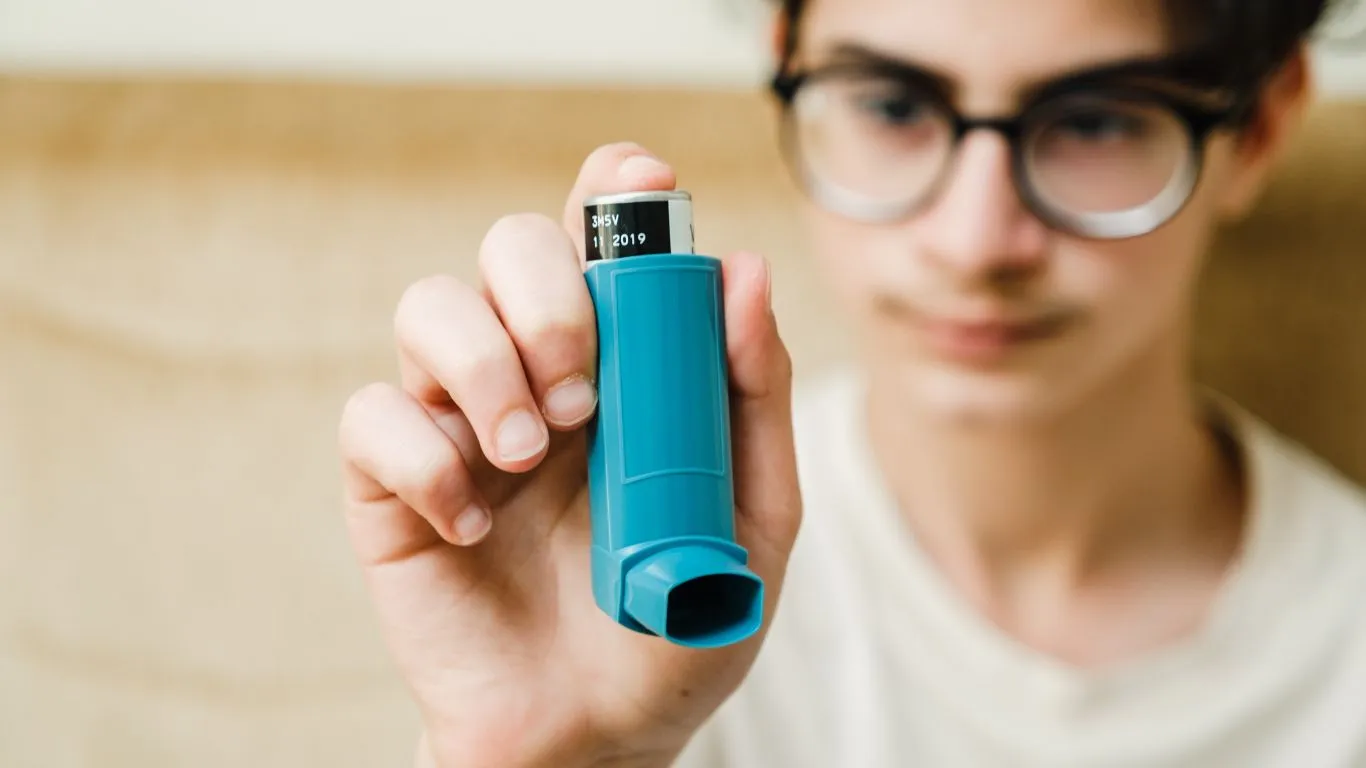How Asthma Impacts Blood Oxygen During Exercise: Vital Insights to Breathe Better
It’s not unusual for patients to ask me why they feel so breathless when exercising, even though their asthma seems “under control.” As a pulmonary nurse practitioner, I’ve had countless conversations with folks who were surprised to learn how asthma impacts blood oxygen during exercise. It’s a tricky topic, but such an important one—especially for those trying to stay active without putting their respiratory health at risk. Whether you’re a weekend jogger, a gym enthusiast, or just trying to keep up with your kids at the park, understanding this connection can help you breathe a little easier—literally and figuratively.
What’s Actually Happening in Your Lungs?

Let’s break it down. Asthma causes your airways to become inflamed and narrow. That inflammation is like a traffic jam inside your lungs—slowing everything down and making it harder for oxygen to move from your lungs into your bloodstream. Now, toss in exercise, which naturally increases your body’s oxygen demand, and you’ve got a situation where your lungs are working overtime without the right support.
When you’re exercising, your muscles need more oxygen and produce more carbon dioxide. In someone with healthy lungs, this exchange happens smoothly. But in someone with asthma, things don’t go so smoothly. The narrow airways limit how much air can move in and out, which can reduce the amount of oxygen getting into your blood. That’s why some people feel dizzy, tired, or short of breath even with moderate exertion.
Real Talk: What I See in Practice
One of my patients—a high school soccer player—used to come in frustrated. He was fit, trained regularly, but kept hitting a wall during matches. After monitoring his oxygen levels during workouts, it was clear his asthma wasn’t just a background issue—it was actively limiting his performance. Once we adjusted his treatment plan and added pre-exercise bronchodilators, he noticed a huge difference. That’s the kind of thing that doesn’t show up in textbooks, but makes all the difference in the real world.
Signs Your Oxygen Might Be Dropping During Exercise

If you have asthma and you’re noticing symptoms during or after a workout, your body might be telling you that your blood oxygen is taking a hit. Some red flags to watch for include:
- Unusual fatigue – not just tired, but completely drained
- Headaches or dizziness after physical activity
- Shortness of breath that doesn’t improve with rest
- Tightness in your chest that makes it hard to take deep breaths
- Confusion or mental fog – especially in more severe cases
Of course, these symptoms can show up in lots of conditions, but if you already have asthma and you’re seeing this pattern, it’s worth paying attention to.
Can You Measure Oxygen Levels on Your Own?
Yep! Pulse oximeters are small, affordable devices that can give you a quick snapshot of your blood oxygen levels. I always remind my patients that a reading below 92% during or after exercise is something we want to look into further. It’s not a diagnostic tool by itself, but it’s super useful as a heads-up indicator. Plus, it gives you a little peace of mind, especially if you’re trying to stay active and keep asthma in check.
Why Exercise Feels Harder with Asthma (Even When You’re Fit)

Here’s the thing a lot of people—even some healthcare pros—miss: you can be physically fit and still struggle during exercise because of asthma-related oxygen dips. Being in shape helps your muscles, but if your lungs can’t keep up with oxygen delivery, your performance is still going to suffer. That’s why someone with asthma can feel winded more easily than someone without it, even if they work out regularly.
From what I’ve seen in my clinical experience, some of the most dedicated, disciplined patients get discouraged not because they’re out of shape, but because their asthma isn’t managed as tightly as it needs to be for the level of activity they’re aiming for. It’s not about “pushing through”—it’s about understanding what your lungs are trying to tell you.
Managing Asthma to Support Oxygen Levels During Workouts

Alright, so we know asthma can mess with your oxygen levels during physical activity, but here’s the good news: there are practical ways to manage it. I always tell my patients that asthma doesn’t mean you have to sit on the sidelines—it just means you have to be a little more intentional about your game plan.
First and foremost, if you haven’t had a proper asthma action plan created with your provider, let’s make that a priority. It’s one of those simple tools that can really change the game. A good action plan includes your baseline meds, when to use rescue inhalers, and what signs to watch for that indicate your oxygen might be dipping too low.
Medication Timing Matters
Timing is everything. I often see patients who use their inhaler only when symptoms flare—but for exercise, prevention is key. Taking a bronchodilator (like albuterol) about 15-30 minutes before activity can open up the airways and help maintain better airflow. That small window of prep can significantly reduce the likelihood of low oxygen levels mid-exercise.
And let’s not forget about maintenance meds. If you’re relying too heavily on your rescue inhaler, it might be time to revisit your long-term control meds, like inhaled corticosteroids or combination inhalers. I’ve worked with plenty of people who didn’t realize their “mild” asthma was actually more persistent—and needed a steadier medication regimen.
Tailoring Your Workouts to Your Lungs

Let me be real for a second—there’s no one-size-fits-all approach to working out with asthma. It takes some trial and error. I’ve helped patients from marathon runners to power walkers find what works for them, and the biggest tip I can give is: listen to your body.
Here are a few go-to strategies I recommend:
- Warm up slowly – Give your lungs time to adjust. Jumping straight into high-intensity activity is a recipe for flare-ups.
- Pick activities that let you control your pace – Swimming, walking, cycling on flat terrain—all great options.
- Exercise in clean air environments – Avoid outdoor workouts during high pollen counts or when the air quality is poor.
- Hydrate well – Dry airways are more reactive. Water helps keep mucus thin and easier to clear.
- Cool down gradually – Sudden stops can trigger bronchospasm in some folks.
I had a patient who was doing HIIT five days a week and couldn’t figure out why she was always wheezing afterward. We dialed it back, switched to interval walking, and focused on better inhaler timing—and the difference was night and day.
Asthma Tech to the Rescue
We’re lucky to live in a time where technology can support asthma management. I recommend apps like AsthmaMD or Peak Flow Diary to help patients track symptoms, peak flow readings, and triggers. Even smart inhalers now exist that can log usage and remind you to take doses. These tools can offer real insight into when oxygen levels might be slipping during activity.
What to Do If You Feel Symptoms Mid-Workout

This is a question I get almost weekly: “What should I do if I feel that tight chest feeling halfway through a workout?”
Here’s my quick-action checklist that I share with patients:
- Stop and rest immediately – Don’t try to push through, it’ll only worsen the drop in oxygen.
- Use your rescue inhaler – Follow the dose outlined in your asthma action plan.
- Focus on controlled breathing – Inhale through your nose, exhale slowly through pursed lips. This helps keep airways open.
- Reassess symptoms after 10 minutes – If there’s no improvement, or if symptoms worsen, seek medical help.
I’ve had people tell me they felt embarrassed stopping in the middle of a class or training session—but trust me, it’s better to take a break and get your lungs back on track than risk serious hypoxia or a full-blown attack. No workout is worth compromising your safety.
Don’t Ignore “Mild” Exercise Struggles
Something I emphasize a lot: even subtle changes in your ability to exercise can signal that your asthma or oxygen levels are shifting. Maybe you’re just a bit more winded than usual or can’t finish your usual routine. That’s a flag. I always recommend tracking these changes, because early tweaks to your treatment can prevent bigger issues down the line.
And hey—don’t beat yourself up if your workouts look different than someone else’s. Asthma is a very personal condition, and managing how asthma impacts blood oxygen during exercise is all about finding your own rhythm and limits. There’s strength in adaptation.
Long-Term Strategies to Protect Your Oxygen Levels with Asthma

Now that we’ve covered the immediate tips for managing how asthma impacts blood oxygen during exercise, let’s zoom out a bit. What does long-term success look like? From my experience as a pulmonary nurse practitioner, it’s all about building habits that protect your lungs and keep oxygen flowing smoothly—not just during workouts, but every single day.
Consistency in medication use is a big one. I can’t stress enough how often people feel fine and then stop their maintenance meds, thinking they don’t need them anymore. That’s a classic trap that often leads to worsening inflammation and, ultimately, lower oxygen levels when you least expect it—like during exercise or a stressful day.
Another pillar is regular monitoring and follow-up. I encourage my patients to schedule routine visits, even when they feel well. Why? Because asthma can sneak up quietly, and early detection of declining lung function or oxygen exchange can prevent serious flare-ups. Sometimes, adjusting inhaler doses or adding therapies before symptoms get bad is what keeps you moving and breathing well.
The Power of Breathing Techniques
Here’s a tip I wish more people knew about: breathing exercises can be a game-changer. Techniques like diaphragmatic breathing or the Buteyko method have helped many of my patients improve their oxygen uptake and reduce the feeling of breathlessness during activity. It’s not just “psychological”—these methods train your lungs and nervous system to function more efficiently.
Integrating breathing exercises into your routine—even 5-10 minutes a day—can build resilience. I’ve seen patients regain confidence in their ability to exercise without that constant worry of running out of breath or their oxygen levels tanking.
Asthma and Oxygen: When to Seek Help

We’ve talked a lot about what you can do on your own, but it’s important to know when it’s time to call in the pros. Here’s what I tell every patient: if you notice your usual symptoms worsening or if your oxygen readings consistently dip below 92% during or after exercise, it’s time to get evaluated. Don’t wait for a full asthma attack to take action.
Emergency symptoms include:
- Severe shortness of breath that doesn’t improve with your inhaler
- Blue lips or fingertips
- Chest pain or tightness that feels unusual or intense
- Confusion, dizziness, or fainting
In my years in pulmonary care, early intervention is what saves not only lungs but lives. So if something feels “off,” trust your instincts and get help. Your healthcare team is there to support you, not judge you.
Incorporating Support Systems
Asthma management isn’t a solo journey. I often recommend involving family, friends, or workout partners in your plan. If they understand your condition and what to do during an episode, it reduces anxiety for everyone and makes it easier to stay active safely.
Plus, joining asthma support groups or forums can connect you with others who share your challenges and successes. The shared wisdom and encouragement are invaluable—I still keep in touch with some of my patients through these networks!
Final Thoughts on Asthma and Blood Oxygen During Exercise
Managing how asthma impacts blood oxygen during exercise is definitely a balancing act. From medication timing and workout modifications to long-term habits and knowing when to seek help, there’s a lot you can do to keep your lungs happy and healthy. My experience has shown me time and again that with the right tools and mindset, people with asthma don’t just cope—they thrive.
If you take away one thing from this, let it be this: your lungs are listening to you. Treat them with care, stay informed, and don’t hesitate to reach out for support. You deserve to move freely and breathe deeply, no matter what your asthma looks like.
References
Disclaimer
This article is intended for informational purposes only and does not replace professional medical advice. Always consult with your healthcare provider before starting or changing any treatment or exercise program related to asthma or lung health. Individual conditions vary, and only a qualified medical professional can provide personalized care.

Bianca Nala is a compassionate Nurse Practitioner with a strong background in primary and respiratory care. As a health writer for Healthusias.com, she combines her clinical expertise with a talent for clear, relatable storytelling to help readers better understand their health. Bianca focuses on topics like asthma, COPD, chronic cough, and overall lung health, aiming to simplify complex medical topics without losing accuracy. Whether she’s treating patients or writing articles, Bianca is driven by a single goal: making quality healthcare knowledge accessible to everyone.






